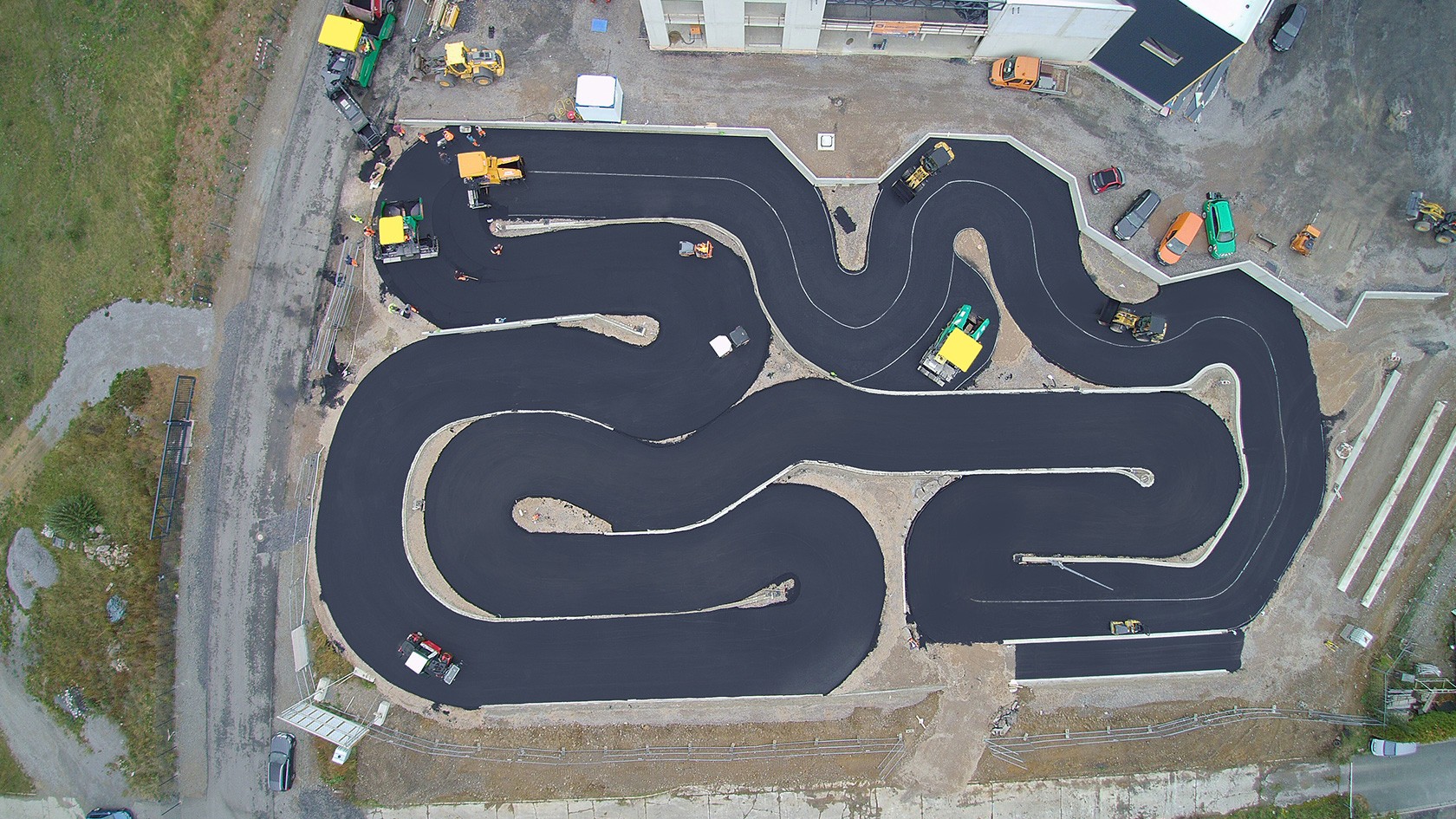For maximum maneuverability: Pivot Steer
The Pivot Steer feature makes the SUPER series wheeled pavers highly maneuverable. It automatically brakes the rear wheel on the inside of the curve hydraulically so the machine effectively 'pulls' it through the curve. That's why Pivot Steer is also referred to as a steering brake. It enables minimal turning circles to be achieved, which is a great advantage on tight construction sites especially – such as race tracks, for example, as well as when working in tight city environments.










